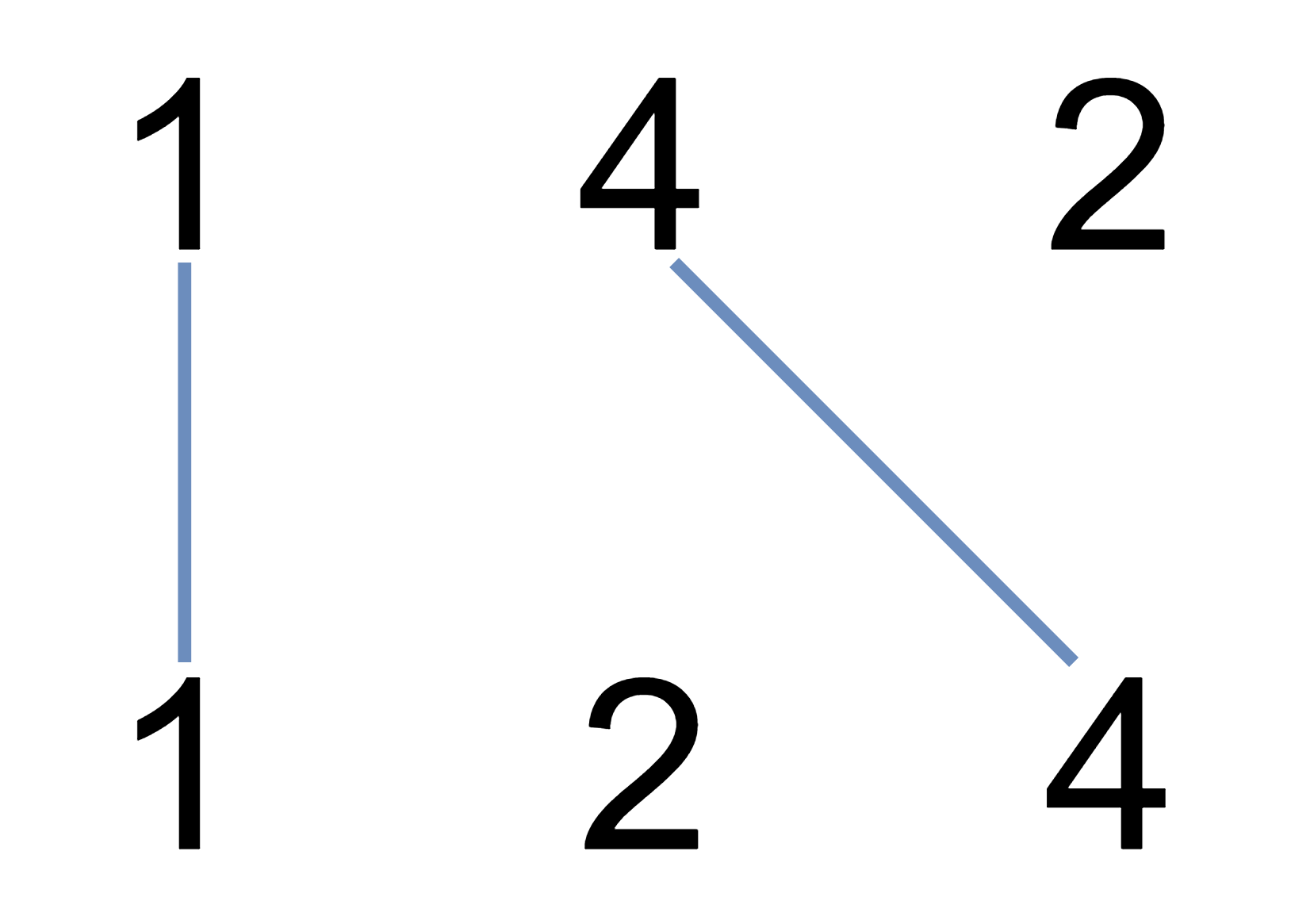You are given two integer arrays nums1 and nums2. We write the integers of nums1 and nums2 (in the order they are given) on two separate horizontal lines.
We may draw connecting lines: a straight line connecting two numbers nums1[i] and nums2[j] such that:
nums1[i] == nums2[j], and- the line we draw does not intersect any other connecting (non-horizontal) line.
Note that a connecting line cannot intersect even at the endpoints (i.e., each number can only belong to one connecting line).
Return the maximum number of connecting lines we can draw in this way.
Example

Input: nums1 = [1,4,2], nums2 = [1,2,4]
Output: 2
Explanation: We can draw 2 uncrossed lines as in the diagram.
We cannot draw 3 uncrossed lines, because the line from nums1[1] = 4 to nums2[2] = 4 will intersect the line from nums1[2]=2 to nums2[1]=2.
Solution
Great solution found here.
var maxUncrossedLines = function (nums1, nums2) {
//Set m to nums1 length and n to nums2 length
const m = nums1.length,
n = nums2.length;
//If m is less than n, return maxUncrossedLines(nums2, nums1)
if (m < n) return maxUncrossedLines(nums2, nums1);
//Set previous and current to arrays of length n + 1 filled with 0s
let previous = Array(n + 1).fill(0);
let current = Array(n + 1).fill(0);
//For each number in nums1
for (let i = 1; i <= m; i++) {
for (let j = 1; j <= n; j++) {
//If the number in nums1 is equal to the number in nums2
if (nums1[i - 1] == nums2[j - 1]) {
//Set current[j] to 1 + previous[j - 1]
current[j] = 1 + previous[j - 1];
} else {
//Set current[j] to the max of previous[j] and current[j - 1]
current[j] = Math.max(previous[j], current[j - 1]);
}
}
//Set previous to current and current to previous
[previous, current] = [current, previous];
}
//Return previous[n]
return previous[n];
};